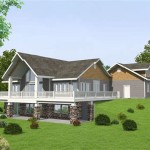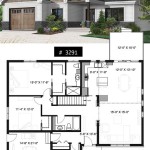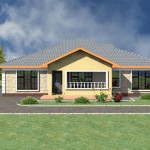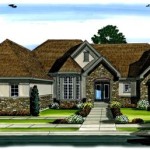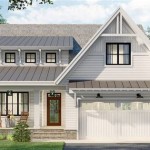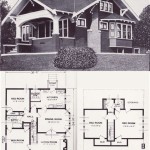House Plans With Hearth Room: A Focal Point for Comfort and Connection
A house plan incorporating a hearth room offers more than just shelter; it provides a designated area for warmth, relaxation, and family connection. This space, traditionally centered around a fireplace or other heat source, is designed to be a cozy and inviting alternative to the formal living room. The inclusion of a hearth room in a house plan can significantly enhance the livability and overall appeal of a home, provided that it's well-planned and seamlessly integrated into the architectural design.
The design and layout of a hearth room can vary considerably, depending on the size of the house, the preferred architectural style, and the homeowner's lifestyle. However, the essential characteristic remains consistent: a comfortable and inviting space that encourages gathering and relaxation. This contrasts with more formal living rooms, which are often reserved for special occasions or entertaining guests. The hearth room is intended to be a functional, everyday space.
Modern house plans often integrate the hearth room with the kitchen and dining area, creating an open-concept living space. This arrangement allows for easy interaction between family members while preparing meals, dining, or simply relaxing by the fire. The open flow also promotes a sense of spaciousness and light, making the home feel more inviting. The integration of a hearth room also provides an informal gathering area that may negate the need for a formal dining room in some cases, allowing an architect or builder to leverage the square footage for another purpose entirely.
Key Considerations When Planning a Hearth Room
Several factors must be considered when integrating a hearth room into a house plan, starting with the location within the home. Placement is crucial for determining its accessibility, functionality, and the overall flow of the house. The size and style of the fireplace or heat source are equally important, as they directly affect the room's ambiance and heating efficiency. Finally, the selection of furniture and décor plays a significant role in creating a comfortable and inviting atmosphere.
Location and Accessibility: The placement of the hearth room within the house plan should be carefully considered to maximize its functionality and appeal. Common locations include adjacent to the kitchen, creating an open-concept living space, or near the back of the house, providing easy access to an outdoor patio or deck. Accessibility is also a key factor. The hearth room should be easily accessible from other living areas, such as the kitchen, dining room, and bedrooms, to encourage its frequent use. Avoiding isolation from the main circulation routes of the house will help ensure that it becomes a central hub of activity, rather than a rarely visited space.
The orientation of the hearth room can also influence its natural lighting and heating efficiency. South-facing rooms tend to receive more sunlight during the day, which can help reduce heating costs in winter. East-facing rooms benefit from morning sunlight, while west-facing rooms may experience excessive heat in the afternoon. The placement of windows and doors should be carefully planned to optimize natural light and ventilation while minimizing heat loss or gain.
Fireplace or Heat Source: The fireplace or heat source is the focal point of the hearth room and must be selected carefully to complement the architectural style of the house and the homeowner's preferences. Traditional fireplaces, wood-burning stoves, and gas fireplaces are all viable options, each with its own advantages and disadvantages. The size and style of the fireplace should be proportional to the size of the room, and its design should contribute to the overall aesthetic appeal. For example, a large stone fireplace can create a rustic and cozy atmosphere, while a sleek, modern gas fireplace can provide a contemporary look.
The efficiency of the fireplace is also an important consideration. Modern fireplaces are designed to be more energy-efficient than older models, reducing heat loss and minimizing environmental impact. Some fireplaces also feature built-in blowers that circulate warm air throughout the room, further improving their heating efficiency. The selection of the fuel type, whether wood, gas, or electricity, also influences the operating costs and environmental impact of the fireplace.
Furniture and Décor: The selection of furniture and décor plays a crucial role in creating a comfortable and inviting atmosphere in the hearth room. Comfortable seating, such as sofas, armchairs, and ottomans, is essential for creating a relaxation zone. The arrangement of the furniture should encourage conversation and interaction, with pieces strategically placed around the fireplace to maximize its visual impact. The style of the furniture should complement the architectural style of the house and the homeowner's personal taste. For example, traditional furniture styles, such as leather sofas and wooden armchairs, can create a classic and elegant look, while modern furniture styles, such as minimalist sofas and metal-framed chairs, can provide a contemporary feel.
The use of soft textures, such as rugs, blankets, and pillows, can add warmth and comfort to the room. The selection of colors should also be carefully considered to create a relaxing and inviting atmosphere. Warm colors, such as reds, oranges, and yellows, can create a cozy and inviting feel, while cool colors, such as blues, greens, and purples, can provide a calming and serene atmosphere. The addition of personal touches, such as family photos, artwork, and decorative objects, can further personalize the space and make it feel like home.
Benefits of Incorporating a Hearth Room into a House Plan
The inclusion of a hearth room in a house plan offers numerous benefits. The space is a central gathering place for family members to interact, a comfortable and relaxing retreat, and can increase the overall value of the property. These advantages make the hearth room a worthwhile addition to any home.
Enhanced Family Interaction: A hearth room provides a designated space for family members to gather and interact. This can be particularly beneficial in today's busy world, where families often struggle to find time to spend together. The hearth room offers a comfortable and inviting environment for conversation, games, and other activities, fostering a sense of connection and togetherness. The presence of a fireplace or other heat source naturally draws people together, creating a warm and welcoming atmosphere.
The open-concept design, which is common in modern hearth rooms, further encourages family interaction by connecting the hearth room with the kitchen and dining area. This allows family members to interact while preparing meals, dining, or simply relaxing by the fire. The open flow also promotes a sense of spaciousness and light, making the home feel more inviting and conducive to social interaction.
Comfortable and Relaxing Retreat: The hearth room serves as a comfortable and relaxing retreat from the stresses of everyday life. The presence of a fireplace or other heat source creates a warm and inviting atmosphere, perfect for unwinding after a long day. The comfortable seating, soft textures, and relaxing colors further enhance the room's appeal as a place of respite. Whether reading a book, watching a movie, or simply enjoying the warmth of the fire, the hearth room provides a sanctuary from the outside world.
The design of the hearth room can be tailored to individual preferences to create a personalized retreat. For example, some homeowners may choose to incorporate a built-in bookcase or entertainment center to create a cozy reading nook or home theater. Others may prefer to keep the space simple and minimalist, focusing on the natural elements of the room, such as the fireplace and the view from the windows. The flexibility of the hearth room design allows homeowners to create a space that truly reflects their personal style and preferences.
Increased Property Value: The inclusion of a hearth room in a house plan can increase the overall value of the property. A well-designed and thoughtfully executed hearth room adds a unique and desirable feature to the home, making it more attractive to potential buyers. The hearth room's appeal lies in its ability to enhance the livability and functionality of the home, providing a central gathering place for family members and a comfortable retreat from the stresses of everyday life.
The increasing popularity of open-concept living spaces has further enhanced the value of the hearth room. Modern homebuyers often seek homes with open floor plans that allow for easy interaction between family members and guests. The integration of the hearth room with the kitchen and dining area creates a seamless flow between these spaces, making the home feel more spacious and inviting. This feature can be a significant selling point for potential buyers, increasing the overall value of the property.
Integrating the Hearth Room with Other Living Spaces
The successful integration of a hearth room with other living spaces is crucial for creating a cohesive and functional home. Open-concept layouts, transitional design elements, and consistent architectural styles are key factors in achieving a seamless transition between the hearth room and other areas of the house.
Open-Concept Layouts: Open-concept layouts are a popular way to integrate the hearth room with other living spaces, particularly the kitchen and dining area. This arrangement creates a seamless flow between these spaces, allowing for easy interaction between family members and guests. The open floor plan also promotes a sense of spaciousness and light, making the home feel more inviting and conducive to social interaction. The careful placement of furniture and décor can help define the individual spaces within the open layout while maintaining a cohesive overall design.
The use of visual cues, such as changes in flooring material or ceiling height, can further define the boundaries between the hearth room, kitchen, and dining area. For example, a rug can be used to delineate the seating area in the hearth room, while a different type of flooring can be used in the kitchen to visually separate it from the other spaces. Similarly, a change in ceiling height can create a sense of intimacy in the hearth room while maintaining an open and airy feel in the kitchen and dining area.
Transitional Design Elements: Transitional design elements can help bridge the gap between the hearth room and other living spaces, ensuring a cohesive and visually appealing design. These elements include the use of similar colors, textures, and materials throughout the house, as well as the incorporation of architectural details that tie the spaces together. The goal is to create a sense of continuity and flow, making the transition between the hearth room and other areas of the house feel natural and seamless.
The selection of furniture and décor can also contribute to the transitional design. For example, furniture pieces that incorporate both traditional and modern elements can help bridge the gap between the different styles. Similarly, the use of neutral colors and natural materials can create a sense of harmony and balance throughout the house. The key is to create a design that is both cohesive and visually interesting, reflecting the homeowner's personal style and preferences.
Consistent Architectural Style: Maintaining a consistent architectural style throughout the house is essential for creating a cohesive and harmonious design. The style of the hearth room should complement the overall architectural style of the house, whether it is traditional, modern, or eclectic. This includes the use of similar materials, colors, and architectural details, as well as the incorporation of design elements that reflect the chosen style. The goal is to create a house that feels unified and seamless, with each room contributing to the overall aesthetic appeal.
The architectural style of the house can also influence the design of the fireplace or heat source in the hearth room. For example, a traditional house may feature a large stone fireplace with intricate carvings, while a modern house may have a sleek, minimalist gas fireplace. The selection of the fireplace should be consistent with the overall style of the house, creating a cohesive and visually appealing design. The successful inclusion of a hearth room within a house plan depends heavily on thoughtful design and attention to detail.

Plan 69275am Modern Farmhouse With Hearth Room

Plan 60558nd Rustic French Country House With Hearth Room Fireplace

Plan 280154jwd 2 Story Modern Farmhouse With Office And Hearth Room

House Plan 95100 Quality Plans From Ahmann Design

Plan 970028vc Four Bed French Country Home With Hearth Room 3790 Sq Ft

Plan 710352btz 3 Bed House With Keeping Room And Split Layout

22 Build It Hearth Room Off Kitchen Ideas House Design

Home Plans With A Hearth Room Keeping Den
What Is A Keeping Room Ideas To Make It Yours Rocket Homes

Primrose Park Country Home Plan 013d 0212 House Plans And More

